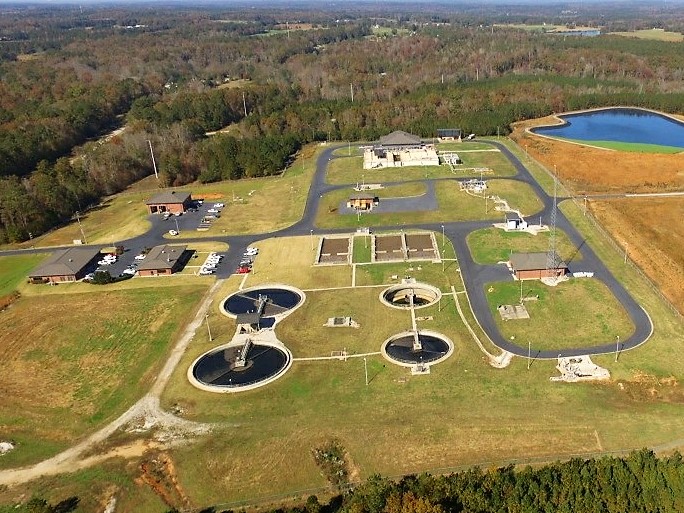SEWERAGE SYSTEM
The Georgia Association of Water Professionals (GAWP) awarded Henry County Water Authority (HCWA) with the 2022 Collection System Platinum Award, which places HCWA atop the list of the very best systems in the state of Georgia.
In addition, the Authority's Bear Creek Water Reclamation Facility received the Plant of the Year Award for 2018 and 2016, along with Walnut Creek for 2017 and Indian Creek for 2011. Walnut Creek Laboratory won the Laboratory Quality Assurance Gold Award for 2022. Indian Creek won the gold award for 2022. Bear Creek L.A.S. also won the Gold Award for 2021 and 2020. These awards reflect standards of excellence evident at the facilities and within the operations of HCWA.
TREATMENT FACILITIES
The Bear Creek facility, constructed in 1997 and expanded in 2009, has a rated treatment capacity of 1.25 MGD. Bear Creek Las facility has 230 wetted acres, a 2.4 MG and a 14 MG holding pond, for a total of 16.4 MGs. That treated wastewater is land applied through 1,360 spray heads. The Bear Creek facility serves the utility's largest commercial account, Atlanta Motor Speedway.
The Indian Creek Water Reclamation Facility came online in November 2001 with a treatment capacity of 1.5 million gallons per day. This facility utilized land application of treated wastewater on 213 acres. The expansion of Indian Creek to 3 million gallons per day to a direct discharge facility was completed in September 2019. This facility utilizes the latest Membrane technology to produce treated wastewater that meets or exceeds all EPA permit standards.

The Walnut Creek Water Reclamation Facility has been called “the backbone of the sewerage system” in Henry County. The facility is the largest facility of the HCWA sewer operations. Walnut Creek was originally completed in 2004 with a treatment capacity of 4 million gallons per day. In 2011 construction was completed expanding the treatment capacity to 8 million gallons per day. This facility utilizes 1,040 acres of forested land to spray the treated wastewater. The treated wastewater is land applied with irrigation using over 8,000 spray heads. A new ATAD digester (Autothermal Thermophilic Aerobic Digester) was also installed to produce a reduced sludge volume, pathogen free Class A bio-solid. This class A bio-solid has many environmental friendly uses as a soil amendment. The Walnut Creek facility also houses the HCWA wastewater laboratory, as well as the Authority’s wastewater departmental offices.
In 2023, construction began to expand Walnut Creek to 14 million gallons per day of treatment capacity. This additional 6 million gallons of treatment capacity will be a separate direct discharge facility that will utilize the latest MBR technology to produce treated wastewater that meets or exceeds all EPA standards. This construction also includes another ATAD digester and solids handling facility. Solar dryers are also being installed to produce Class A bio-solids that are dryer with even more environmentally friendly uses. A new central laboratory building is also being built that will also house the Water Authority’s Industrial Pretreatment offices and operations. This construction is scheduled to be completed in July 2025.
COLLECTION and CONVEYANCE
The HCWA wastewater collection and conveyance system consists of 32 wastewater lift stations and approximately 455 miles of collection sewers. The collection and conveyance system uses a range from 8-inch to 54-inch sewer lines. Trunk sewers, the largest lines, are made out of reinforced concrete or ductile iron pipes, while a percentage of the smaller collector sewers are made of PVC pipe.
Approximately one-third of the sewers in the HCWA system are 20 years old or older, but the Authority has an aggressive capital improvement program for renewal and replacement of assets as needed. The HCWA collection and conveyance system also has standby pumps and auxiliary generators for safe operation even in the event of emergencies, such as electrical power outages.
All of the Authority's sewer lines are designed for sanitary sewage, and they are inspected on a rotating basis, annually, meaning every line is inspected at least every two years. The HCWA sewer line inspection process involves visual manhole inspection and closed circuit TV inspections of existing lines. Air testing, TV and visual manhole inspections are conducted on new lines. Trouble spots in the HCWA sewerage system are identified through flow meters and increased maintenance inspections.
